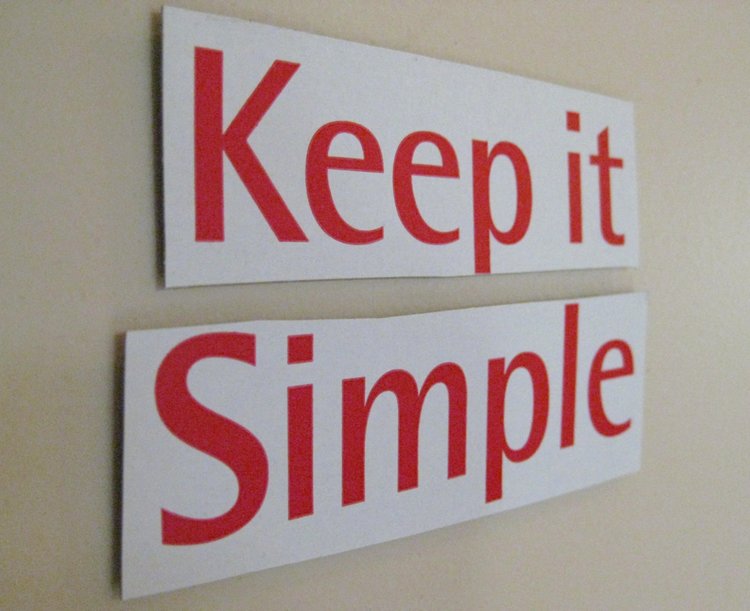“Just keep it simple.”
That’s probably the most frequent piece of advice that I hear given out in the technology and startup worlds.
It’s great advice, too. There’s only one problem with it: almost no one knows what simplicity is.
It’s one of those “know it when you see it” kind of things–a general principle that we can feel but not explain.
Which brings us to the problem: when you’re designing a product or coming up with a new program for your business, vague “gut feelings” aren’t enough. You need a specific mental checklist or framework that you can use to guide your thinking.
That’s where the father of Persuasive Technology, BJ Fogg, and his “Six Elements of Simplicity” come into play.
They are:
-
Time
-
Money
-
Brain Cycles (Mental Effort)
-
Physical Effort
-
Social Deviance
-
Non-routine
It’s the only comprehensive and practical definition of simplicity I’ve come across.
Let’s go over each of the elements.
Time: Things that take a lot of time (generally) aren’t simple. In order for a behavior to be “simple”, it needs to be as quick to perform as possible.
Throughout my career, I’ve noticed that time is actually a good proxy for *ability*. Here’s what I mean: generally, if a behavior is easy to do, it tends to require very little time. Confusing, or mentally and physically challenging, behaviors are time-sucks.
Money: Adding a monetary cost to any behavior makes it more complicated. Think of an arcade vs. an at-home gaming system. Starting a game on an X-box is much simpler. All you do is press play. With an arcade machine you first have to insert a quarter (or two) and press play.
Brain Cycles (which I call “mental effort”): If something is hard to understand, it’s not simple. The more a behavior requires people to think, the less simple it is.
Physical effort: Behaviors that require a lot of movement or strain aren’t very simple. For example, tapping a button is a simple behavior. Typing a sentence is a less simple behavior, since it requires 20+ taps. Walking 10 feet is a simple behavior. Running a 5k is a more complex behavior.
Social deviance: Some things are easy to do but shameful or embarrassing. For example, not wearing a shirt in public is a quite easy (simple) behavior. However, it’s frowned upon due to social norms. It’s socially deviant. Thus, according to Fogg’s model, it’s not simple.
Non-routine: The more we do something, the easier it gets. We’re learning creatures. So a behavior that isn’t “simple” for person A might be quite simple for person B. Why? Because they’ve practiced it.
The next time that you want to make something that you’re creating simpler, go through this list.
Have you made the behavior you want people to do as quick as possible?
Have you gotten rid of (or minimized) any cost ($) barriers?
Have you made the behavior as understandable as possible? A 4th grader should be able to understand what you want them to do (and how you want them to do it).
Have you minimized the physical effort as much as possible?
Are you asking people to do something that’s a little… bizarre? Make sure you don’t ask people to do something that will make them look weird.
And, finally, what are the current habits of the people you’re designing for? Are there certain behaviors they can do well (from practice and experience) that you can incorporate into your plans? Take advantage of their routines.
Hopefully, this short article has clarified the muddled concept of “simplicity” for you. Now, go forth and crush it!





